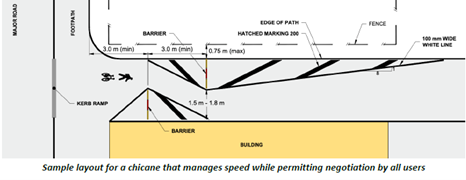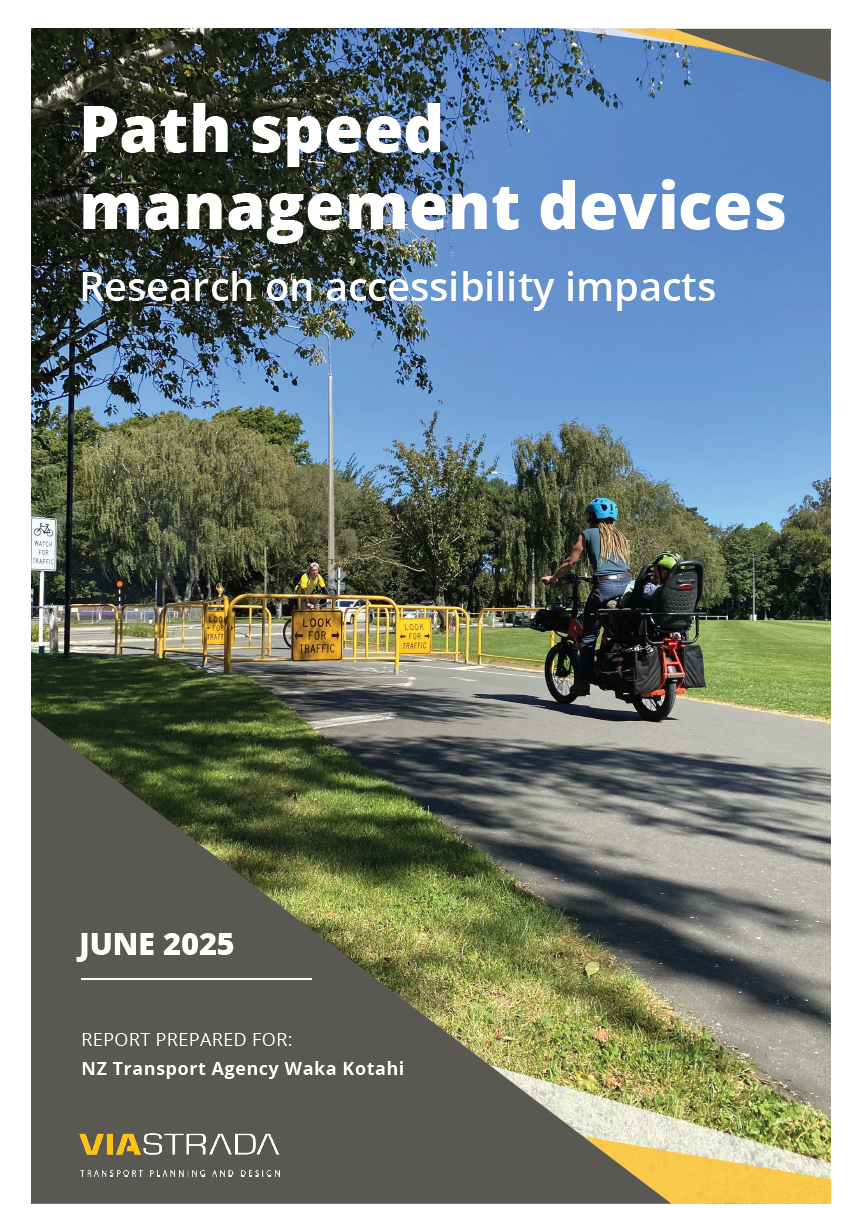Path Speed Management Research
Objective
Client
Location
Deliverable
Timeframe
Project Status
Background
NZ Transport Agency Waka Kotahi commissioned ViaStrada to investigate how well different speed-reducing designs work on bike paths and shared paths used by cyclists and other small transport devices (like scooters). These designs—such as chicanes (zigzag paths), mazes, and speed humps—are typically placed where paths meet roads, railways or bus stop conflict points.
The study looked at whether these devices slow people down, make paths safer, or unintentionally create problems. For example, mazes might distract riders from watching for trains or be too tight for larger bikes or prams. Some devices can also block access for legitimate users or make travel inconvenient.
Our researchers tested existing layouts and temporarily installed new ones using movable barriers to simulate various designs. We found that:
• Chicanes were the most effective at reducing speed but often made access harder.
• Simulated mazes showed serious accessibility issues when too tight.
• Speed humps didn’t significantly slow down users.
• Some devices were more useful for alerting riders to upcoming hazards than actually slowing them.
As a result, the team recommended improved designs—especially for chicanes—that strike a better balance between slowing down riders, keeping paths accessible, and alerting users to potential danger.
The research is published here and informs updates to the NZTA Cycling Network Guidance.





